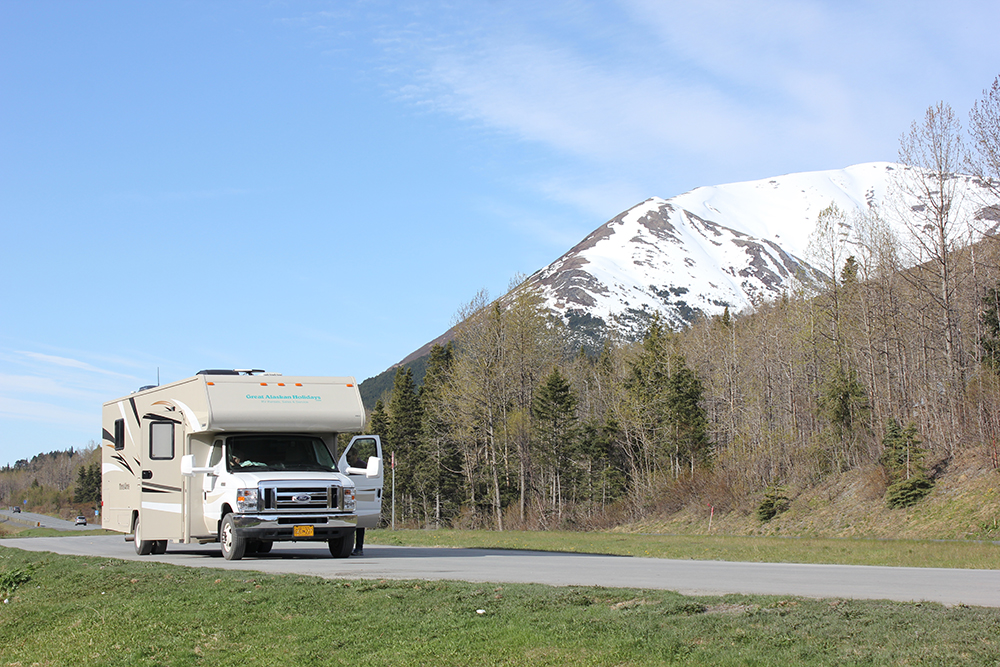Introduction
- Explanation of the importance of protecting your RV from weather damage: Weather can cause significant damage to your RV, especially if it’s exposed to the elements for extended periods. Rain, snow, wind, and sunlight can all take a toll on your vehicle, causing leaks, mold, fading, and other problems. Protecting your RV from weather damage is crucial to ensure its longevity and resale value.
- Overview of the article: In this article, we’ll discuss how to prepare your RV for different weather conditions, from rain and snow to sun and wind. We’ll cover the essential steps you can take to protect your RV’s exterior, including inspecting it for damage, sealing it against leaks, cleaning the roof and gutters, applying a protective coating, and covering it with a quality cover.

Preparing Your RV for Weather
- Inspect the exterior of the RV: Start by examining your RV’s exterior for any signs of damage, such as cracks, dents, or scratches. Check the windows, doors, and compartments for leaks or gaps. Look for any loose or missing parts, such as screws, bolts, or hinges. Make a list of any repairs or replacements you need to make.
- Check the seals and seams for leaks: Seals and seams are common areas where water can penetrate your RV, causing damage and mold. Check the roof, windows, doors, and other openings for any gaps or cracks. Use a sealant or caulk to fill any holes or leaks. Make sure to choose a sealant that is compatible with your RV’s material and can withstand different weather conditions.
- Clean the roof and gutters: A clean roof and gutters can prevent water from accumulating and causing damage to your RV. Use a non-abrasive cleaner and a soft brush to remove any dirt, debris, or stains from the roof. Rinse it thoroughly with water and dry it with a clean cloth. Clean the gutters with a brush or a blower to remove any leaves or twigs that can clog them.
- Apply a protective coating to the RV’s exterior: A protective coating can help your RV withstand different weather conditions, such as UV rays, rain, and snow. Choose a coating that is suitable for your RV’s material and can provide long-lasting protection. Follow the manufacturer’s instructions carefully when applying the coating, and make sure to cover all areas of the RV.
- Cover the RV with a quality cover: A cover can shield your RV from sun, rain, snow, and wind, preventing damage and prolonging its life. Choose a cover that is specifically designed for your RV’s size and shape, and make sure it’s made of durable, weather-resistant material. Secure the cover tightly to prevent it from flapping or blowing off.
III. Protecting Your RV from Wind Damage
- Park the RV in a sheltered location: Whenever possible, park your RV in a sheltered location to reduce its exposure to strong winds. This could be a garage, a carport, or a covered RV storage facility.
- Use tie-downs to secure the RV: If you’re parking your RV in an open area, use tie-downs to anchor it securely to the ground. This will prevent it from tipping over or being blown away by strong winds.
- Lower the RV’s leveling jacks: Lowering the leveling jacks will help stabilize the RV and prevent it from swaying or rocking in the wind.
- Reduce wind resistance by removing any exterior items: Remove any items from the exterior of the RV that could create wind resistance, such as awnings, antennas, or bike racks. This will help reduce the RV’s overall wind profile and make it less susceptible to wind damage.

Conclusion
- Recap of the importance of protecting your RV from weather damage: Protecting your RV from weather damage is important to ensure its longevity and prevent costly repairs. Weather events such as rain, hail, snow, and wind can cause significant damage to your RV, and taking steps to protect it can help minimize the risk of damage.
- Final thoughts and recommendations: As an RV owner, it’s important to be proactive in protecting your investment from weather damage. Regular maintenance, storing your RV properly, and taking precautions during severe weather events can all help extend the life of your RV and prevent costly repairs. We recommend creating a checklist of steps to take before, during, and after inclement weather to help ensure that your RV is well-protected. Additionally, consulting with a professional RV service provider can be helpful in identifying potential problem areas and recommending appropriate solutions to protect your RV from weather damage.
See Also :
- Best RV Battery For Boondocking
- Best RV Battery For Dry Camping
- Best RV Cleaner For Fiberglass
- Best Sewer Hose For RV
- Best Solar Panels For RV

